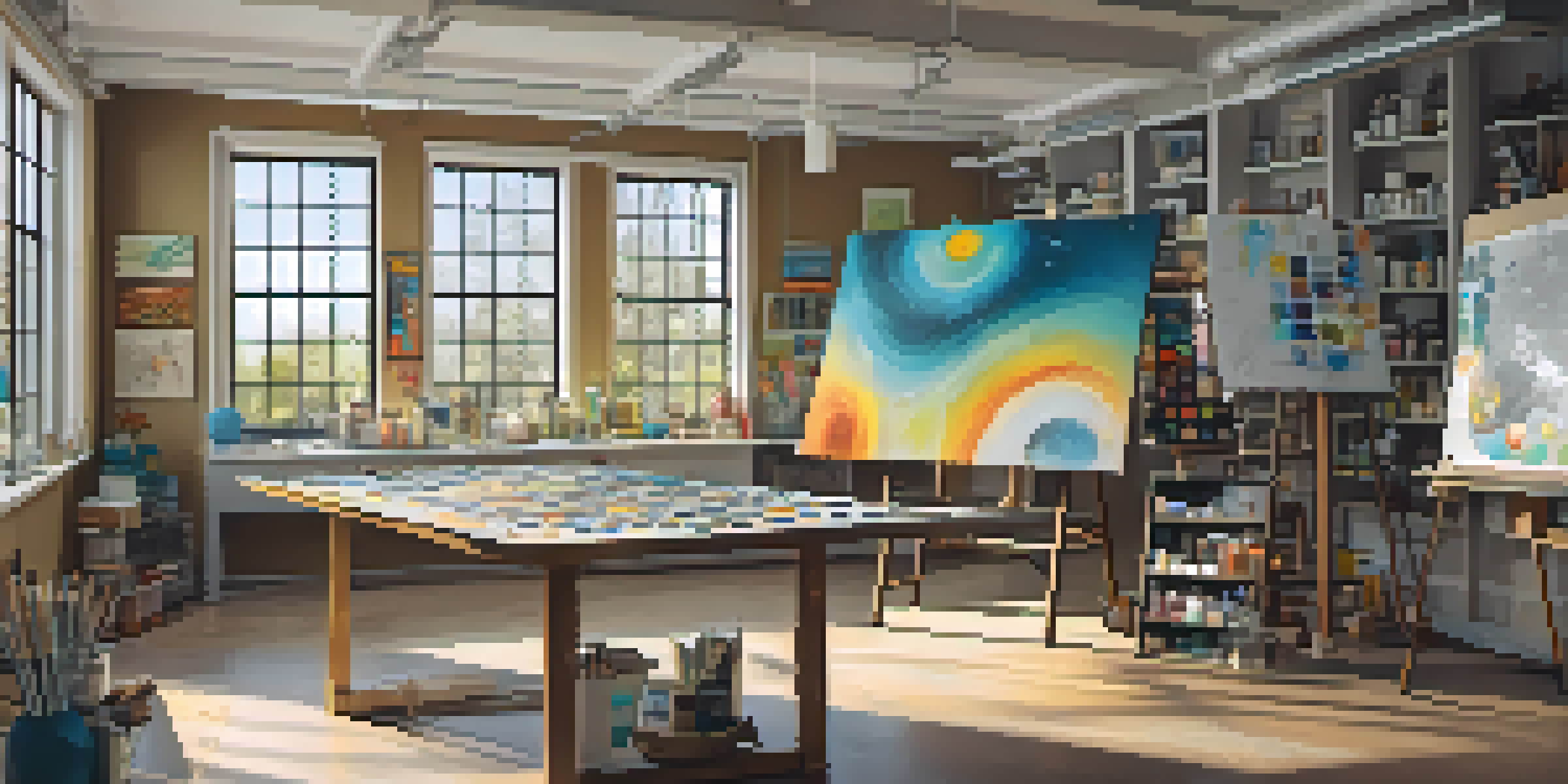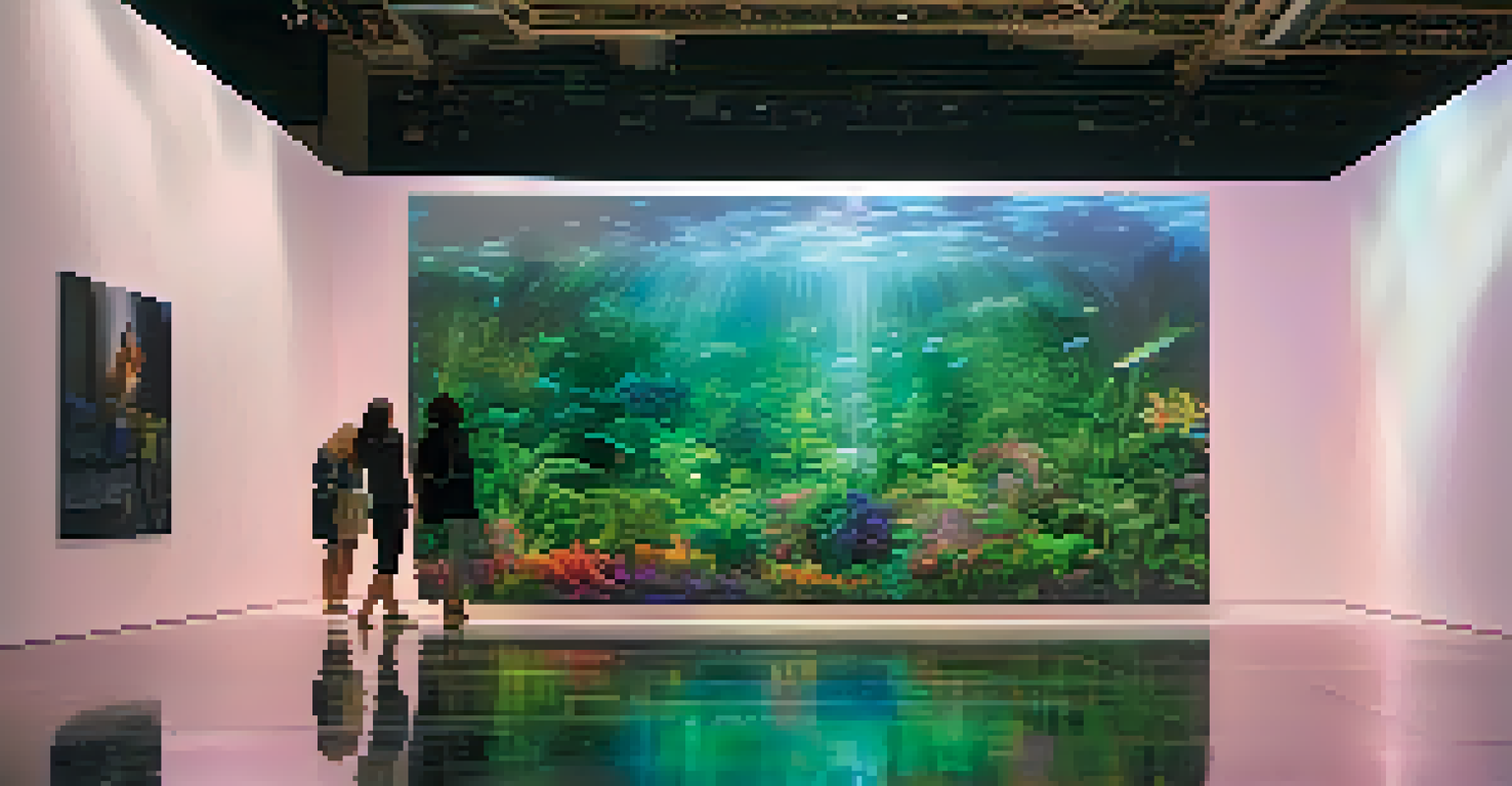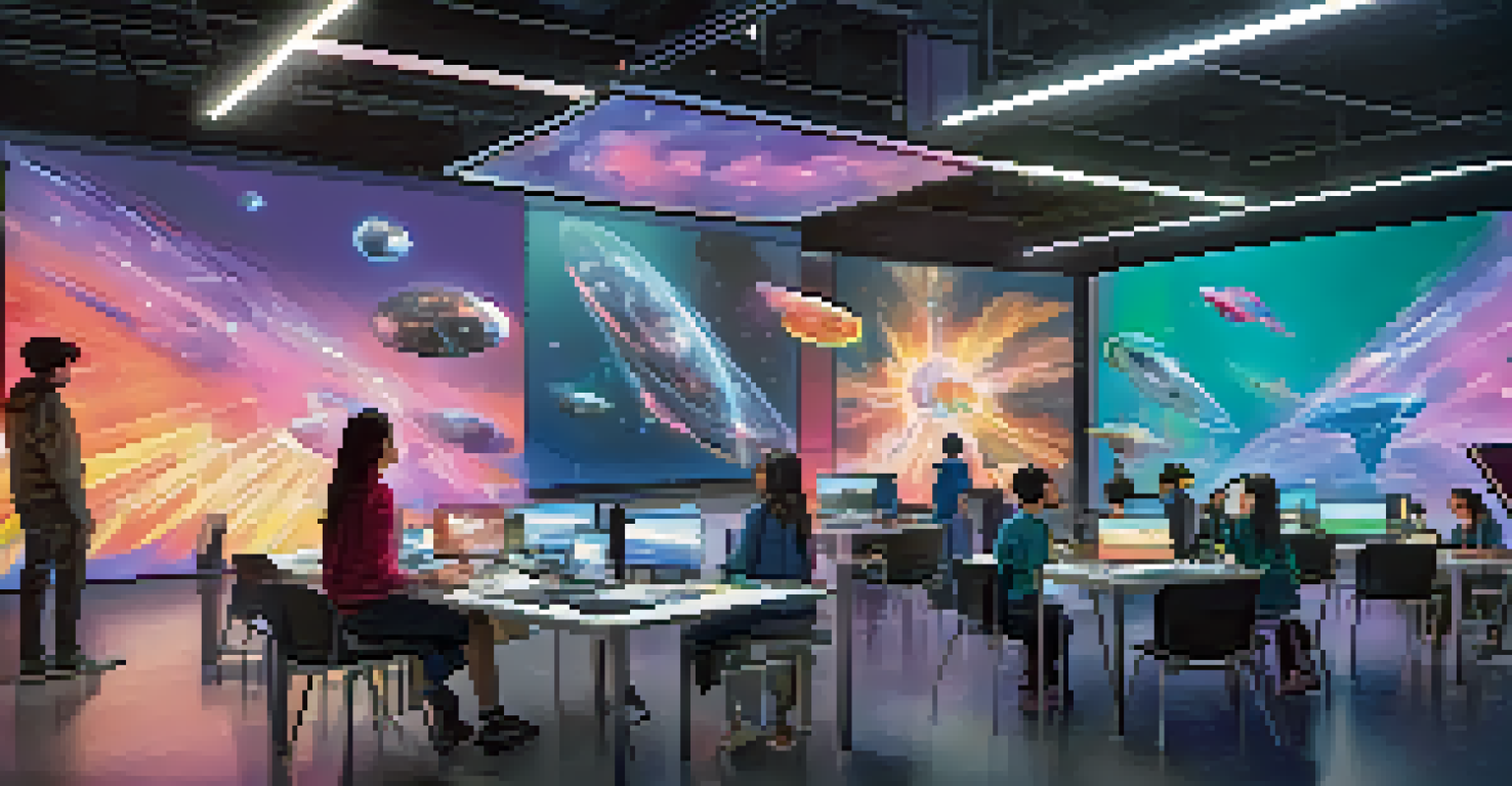The Fusion of Art and Science in Contemporary Creative Practices

Understanding the Intersection of Art and Science
Art and science may seem like two distinct worlds, but they often intersect in fascinating ways. Both disciplines seek to explore, express, and understand the human experience, albeit through different lenses. For instance, artists might use scientific principles to enhance their work, while scientists can draw inspiration from artistic creativity to convey complex ideas.
Art and science are not separate realms; they are two sides of the same coin, each enhancing the other.
This fusion allows for innovative approaches in problem-solving and communication. Imagine a painter using mathematical concepts to create optical illusions or a scientist employing storytelling techniques to make research accessible. Such collaborations spark new ideas that can lead to groundbreaking discoveries and artistic masterpieces.
Ultimately, the intersection of art and science enriches both fields, encouraging collaboration that challenges traditional boundaries. By recognizing the value of both disciplines, we can appreciate the beauty that arises when creativity meets analytical thinking.
Historical Perspectives on Art and Science Collaboration
The relationship between art and science is not a modern phenomenon; it dates back centuries. Think of the Renaissance, a period where artists like Leonardo da Vinci seamlessly blended artistic talent with scientific inquiry. Da Vinci's detailed anatomical sketches are a prime example of how he used his understanding of the human body to enhance his art.

Throughout history, this collaboration has evolved. In the 19th century, artists began to explore the effects of light and color, leading to the Impressionist movement, which was influenced by scientific studies on optics. These historical examples show that the dialogue between art and science has always existed, paving the way for contemporary practices.
Art and Science: A Creative Fusion
The intersection of art and science fosters innovation and enhances our understanding of both fields.
Today, we can see this historical collaboration reflected in various modern movements, where artists actively engage with scientific research to push boundaries. This rich history serves as a foundation for today's creative practices, proving that the fusion of these two fields can lead to extraordinary outcomes.
Contemporary Artists Blending Science with Creativity
In the contemporary art scene, many artists are embracing science as a core element of their creative process. For example, artists like Olafur Eliasson incorporate scientific principles in their installations, using light, water, and air to create immersive experiences. Eliasson's work encourages viewers to reflect on their relationship with nature and the environment.
Creativity is the power to connect the seemingly unconnected.
Another notable example is the work of Heather Dewey-Hagborg, who uses genetic analysis to create 3D-printed sculptures based on DNA samples. Her art raises profound ethical questions about privacy and identity while showcasing the potential of blending science with artistic expression. These artists exemplify how the fusion of art and science can provoke thought and inspire change.
By pushing the boundaries of traditional art forms, these contemporary creators are not only redefining what art can be but are also fostering a greater public understanding of scientific concepts. Their work serves as a reminder that creativity and inquiry can coexist, leading to innovative expressions that resonate with audiences.
The Role of Technology in Creative Practices
Technology plays a crucial role in the fusion of art and science today. Digital tools allow artists to experiment with new mediums, such as virtual reality, artificial intelligence, and data visualization. These advancements enable creators to explore complex ideas and present them in engaging ways that resonate with modern audiences.
For instance, artists like Refik Anadol use algorithms and data to create stunning visual displays that challenge our perceptions of reality. His work blends art and technology while inviting viewers to consider the implications of data in our lives. This intersection not only enhances artistic expression but also opens discussions about the ethical dimensions of technology.
Historical Context of Collaboration
Throughout history, artists and scientists have collaborated, paving the way for contemporary practices and breakthroughs.
Moreover, technology facilitates collaboration between artists and scientists, leading to innovative projects that neither could achieve alone. The integration of technology in creative practices illustrates how the fusion of art and science is not just a trend but a powerful movement shaping our cultural landscape.
Science Communication Through Artistic Mediums
Artistic expression serves as an effective tool for science communication. By transforming complex scientific concepts into relatable visuals and narratives, artists can bridge the gap between the scientific community and the general public. This approach makes science more accessible and fosters a greater appreciation for its relevance in our daily lives.
Consider the work of artists like Anicka Yi, who uses her installations to explore topics such as microbiology and the human experience. By translating scientific research into tangible experiences, she invites viewers to engage with scientific ideas in ways that are both meaningful and memorable. This method not only educates but also inspires curiosity.
Ultimately, art has the power to evoke emotions and provoke thought, making it an invaluable ally in science communication. Through creative practices, we can better understand and appreciate the intricacies of science, encouraging a more informed and engaged society.
The Impact of Interdisciplinary Education
Interdisciplinary education is crucial in fostering the fusion of art and science. By encouraging students to explore both fields, educational institutions can cultivate a generation of innovators who think outside the box. Programs that combine art and science, such as STEAM (Science, Technology, Engineering, Arts, and Mathematics), emphasize the importance of creativity in scientific endeavors.
These educational initiatives not only enhance critical thinking but also prepare students for the complexities of the modern world. Imagine a young scientist who can also paint, using their artistic skills to visualize data creatively. This kind of thinking leads to breakthroughs that can change industries and transform societies.
Technology Enhances Artistic Expression
Emerging technologies enable artists to explore complex ideas, facilitating collaboration that reshapes our cultural landscape.
Moreover, interdisciplinary education promotes collaboration across fields, encouraging students to work together on projects that challenge traditional boundaries. By fostering a culture of creativity and inquiry, we can inspire the next generation to embrace the fusion of art and science in their future careers.
Future Directions for Art and Science Collaboration
As we look to the future, the collaboration between art and science is likely to evolve even further. Emerging technologies, such as augmented reality and biotechnology, will continue to offer new avenues for creative expression and scientific exploration. Artists and scientists will increasingly find common ground in these innovations, leading to groundbreaking projects that redefine our understanding of both fields.
Additionally, the growing emphasis on sustainability and social issues will drive artists and scientists to work together on projects that address pressing global challenges. By combining their expertise, they can develop solutions that are not only innovative but also socially responsible. This collective effort can lead to impactful changes in our society.

In essence, the future of art and science collaboration holds immense potential. As these two worlds continue to intertwine, we can expect to see more inspiring projects that challenge conventional wisdom and inspire new ways of thinking.